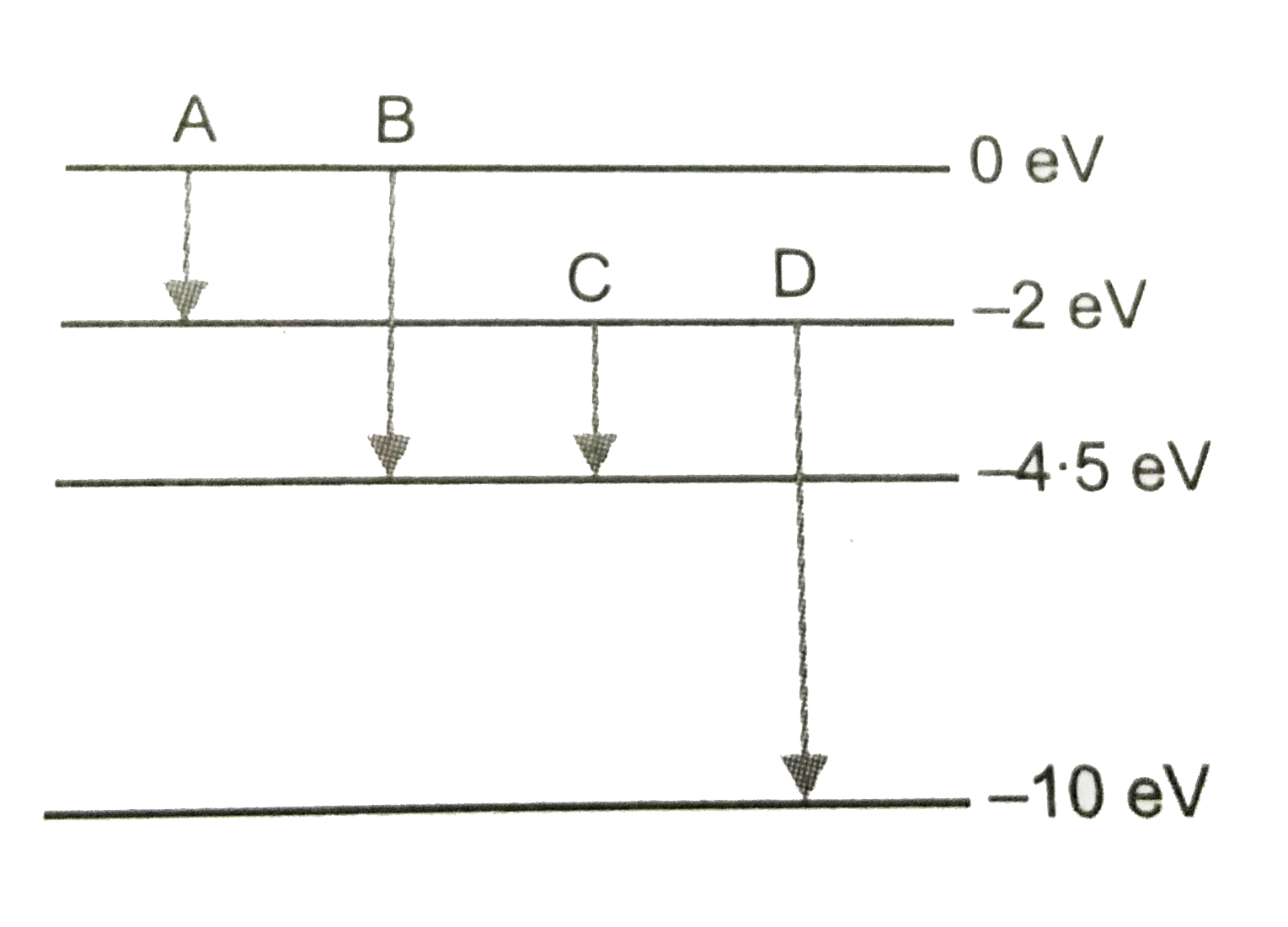The phenomenon of spontaneous emission of radiations is
radioactivity
electron emission
rectification
none of these
The correct Answer is:A
Step by step video, text & image solution for The phenomenon of spontaneous emission of radiations is by Physics experts to help you in doubts & scoring excellent marks in Class 12 exams.
Topper's Solved these Questions
Similar Questions
The energy levels of a hypothetical atom are shown in Fig.12.13. Which of the shown transitions will result in the emission of a photon of wavelength 275 nm ?
Which of these transitions correspond to emission of radiation of (i) maximum and (ii) minimum wavelength ?View SolutionThe energy levels of an atom are shown in fig. Which transition corresponds to emission of radiation of (i) maximum wavelength (ii) minimum wavelength?
 View Solution
View Solution
Knowledge Check
- Question 1 - Select One
Many unstable nuclie can decay spontaneously to a nucleus of lower mass but differnet combination of nucleons. The process of spontaneous emission of radiation is called radioactivity substance.
Radioactive decay is a statistical process. Radiaactivity is independent of all external conditions. The number of decays per unit time or decay rate is called activity. Activity exponentially decrease with time. Mean lifetime is always greater than half-life time.
Choose the correct statemnet about radioactivity:ARadioactivity is a statistical process.BRadioactivity is independent of high temperature and high pressureCWhen a nucleus undergoes α- or - β-decay, its atomic number changes.DAll of the these - Question 2 - Select One
Many unstable nuclie can decay spontaneously to a nucleus of lower mass but differnet combination of nucleons. The process of spontaneous emission of radiation is called radioactivity substance.
Radioactive decay is a statistical process. Radiaactivity is independent of all external conditions. The number of decays per unit time or decay rate is called activity. Activity exponentially decrease with time. Mean lifetime is always greater than half-life time.
n number of α-particels per second are being emitted by B atoms of a radioactive element. The half-life of element will beAnNsBNnsC0693NnsD0.693nNs - Question 3 - Select One
Many unstable nuclie can decay spontaneously to a nucleus of lower mass but differnet combination of nucleons. The process of spontaneous emission of radiation is called radioactivity substance.
Radioactive decay is a statistical process. Radiaactivity is independent of all external conditions. The number of decays per unit time or decay rate is called activity. Activity exponentially decrease with time. Mean lifetime is always greater than half-life time.
If TH is the half-life and TM is the mean life. Which of the following statement is correct.ATM>THBTM<THCBoth ar directly proportional to square of the decay constant.DTM∝λ0
Fig. shows energy level diagram of hydrogen atom. Find out the transition which results in the emission of a photon of wavelength 496 nm. Which transition corresponds to emission of radiation of maximum wavelength? Justify your answer.
 View Solution
View SolutionThe phenomenon of photoelectric emission was discovered in 1887 by
View SolutionThe spontaneous emission of radioactivity by unstable nuclei is called
View SolutionThe temperatures of two bodies A and B are 727∘C and 127∘C . The ratio of rate of emission of radiations will be
View SolutionThe phenomenon of emission of visible light as a result of chemical change is known as
View Solution

